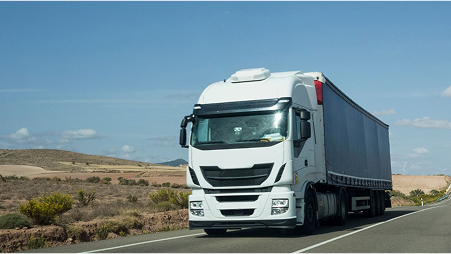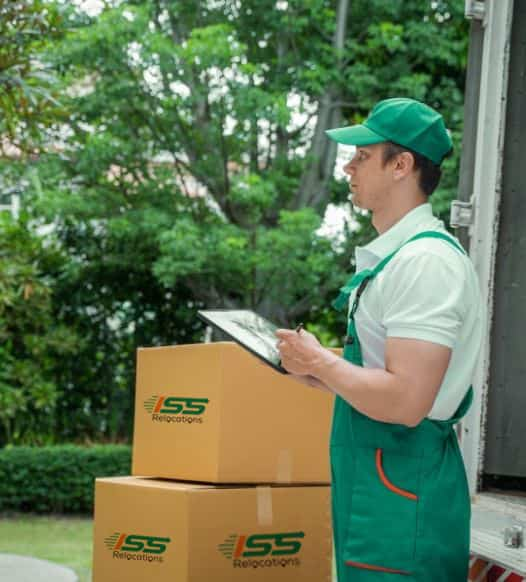
Shipping Cars from the UAE to the UK – A Service Guide
Shipping cars from the UAE to the UK is a growing necessity for both expats and businesses seeking a reliable and cost-effective way to transport their vehicles overseas. Whether you’re relocating permanently, sending a luxury vehicle abroad, or expanding your business operations, the process of international car transport requires careful planning and compliance with both UAE and UK regulations.
As the demand for vehicle exports rises, especially from hubs like Dubai and Abu Dhabi, the process of shipping cars becomes more streamlined but still includes critical steps. From paperwork and inspections to choosing the right shipping method, there’s a lot to consider. Working with a global relocation expert like ISS Relocations ensures that every step—from initial consultation to final delivery—is smooth and transparent.
Understanding the logistics of shipping cars is essential to avoid delays, extra costs, or compliance issues upon arrival in the UK. This guide will walk you through everything from documentation to shipping options so you can make informed decisions backed by expert knowledge.
Shipping Cars from the UAE to the UK: What You Need to Know
Shipping cars across international borders is not just about transport—it’s about regulations, timelines, and seamless logistics. Knowing what to expect before starting the process can save time and avoid costly mistakes.
Why Ship a Car from the UAE to the UK?
Many UAE residents choose to export their vehicles to the UK for personal or financial reasons. Whether it’s a high-value luxury car or a daily-use vehicle, shipping cars to the UK is often more affordable than purchasing the same model locally in Britain.
Some owners ship their vehicles due to emotional value, especially if the car has been customized or is part of a long-term ownership. Others do so to take advantage of lower depreciation rates in the UAE before selling the vehicle in the UK market.
Moreover, certain car models available in the UAE may be harder to find or more expensive in the UK, making international transport a smarter choice.
Common Challenges in International Car Shipping
Despite its benefits, shipping cars from the UAE to the UK involves overcoming several logistical and regulatory challenges. These include ensuring vehicle compliance with UK road standards, managing customs declarations, and preparing the necessary documentation.
The process can be intimidating for individuals unfamiliar with UK import laws, especially with requirements like Individual Vehicle Approval (IVA), VAT obligations, and emissions compliance. Selecting a service provider like ISS Relocations helps mitigate these risks. Their experience in handling global relocations ensures that your vehicle meets all legal and operational standards before departure and upon arrival.
How ISS Relocations Adds Value
ISS Relocations brings years of hands-on expertise to the international relocation industry. Their team understands the nuances involved in shipping cars and offers tailored services, including documentation support, customs clearance, and reliable tracking updates. Clients benefit from a transparent process with no hidden costs, and a dedicated point of contact from start to finish.
With a strong global network and a customer-first approach, ISS Relocations streamlines the entire journey, making shipping cars less stressful and more efficient for individuals and businesses alike.
Modes of Shipping: Choosing What Works for You
There are different ways of shipping cars from the UAE to the UK, and each method comes with its pros and cons. Selecting the right option depends on your vehicle type, budget, and delivery timeline.
Roll-On/Roll-Off (RoRo) Shipping
RoRo shipping is one of the most commonly used methods for transporting standard vehicles overseas. It involves driving the car directly onto a vessel designed for rolling cargo. Once the vehicle reaches the destination port, it is driven off and prepared for delivery.
RoRo is considered cost-effective and efficient for shipping cars that are in running condition. It minimizes handling and lowers risk since the vehicle is not lifted by cranes. However, it does not provide additional protection from sea elements, making it less ideal for luxury or vintage cars.
Container Shipping
Container shipping offers greater security and flexibility, making it suitable for high-value or delicate vehicles. You can opt for either a full container—where your car is the only cargo—or a shared container, which includes multiple vehicles.
The biggest advantage of container shipping is protection. The enclosed environment shields the car from environmental elements during transit. It also allows for the inclusion of personal belongings within the same container, a practical option for those relocating.
Though more expensive than RoRo, container shipping remains a preferred method for those prioritizing vehicle safety. ISS Relocations provides access to both types of shipping methods, advising clients on the most suitable choice based on their specific needs and shipment goals.
What Method is Right for You?
The choice between RoRo and container shipping often depends on the vehicle type and the customer’s budget. While RoRo is ideal for operational vehicles and tighter budgets, container shipping is recommended for luxury, collectible, or non-functional vehicles requiring added protection.
ISS Relocations evaluates each case individually and recommends the most efficient and secure solution. Their knowledge of international logistics ensures that shipping cars is not only cost-effective but also customized to your relocation priorities.
You May Also Like: How to Find Right Movers in Dubai for Moving to Switzerland
Documentation Required for Car Shipping
When it comes to shipping cars internationally, paperwork is not just important—it’s mandatory. Missing or incorrect documentation can lead to costly delays, denied customs clearance, or even refusal of entry into the UK. Understanding what’s required and preparing ahead of time is a vital part of the shipping process.
Essential Documents for Exporting a Vehicle
Before initiating the export process, certain documents must be gathered and verified. First, the car’s original registration card is required, proving that the vehicle is legally owned and roadworthy. UAE export certificates are also necessary, which are issued once the vehicle has been cleared for international departure by local transport authorities.
In addition, valid identification such as a passport copy and Emirates ID must be submitted. These documents confirm ownership and authorize the export. Anyone shipping cars without these credentials can face delays or restrictions at both UAE and UK ports.
ISS Relocations provides full support in organizing, reviewing, and submitting all required paperwork, ensuring a streamlined documentation process from start to finish.
UK Import Paperwork and Compliance Standards
After arrival in the UK, another set of documentation comes into play. A bill of lading or shipping certificate is needed to prove that the vehicle has legally entered the country. If the car is less than ten years old, it will likely need Individual Vehicle Approval (IVA), which confirms it meets UK safety and environmental standards.
You’ll also need to complete HMRC forms to account for customs and tax duties. Vehicles must be declared within 14 days of arrival, or penalties can apply. All necessary documents must be presented to release the vehicle from customs.
Shipping cars through professional services like those offered by ISS Relocations ensures compliance with every requirement, reducing the stress and uncertainty involved in managing legal paperwork on your own.
Shipping Cars from UAE to UK ?
Start your relocation journey stress-free by contacting us today!
Costs Involved in Shipping Cars to the UK
Understanding the cost breakdown is crucial for anyone shipping cars from the UAE to the UK. It’s not just about the transport fee—there are multiple factors and hidden expenses that could significantly impact your budget if unaccounted for.
Key Factors Affecting Shipping Costs
The overall cost of shipping cars depends on a combination of elements. The shipping method you choose—whether RoRo or container—has a major influence on price. Container shipping is generally more expensive due to the added protection and space allocation. However, it may offer better value if you’re also transporting household items.
Other cost variables include the type and size of the vehicle, port charges, fuel surcharges, and handling fees. High-end cars or oversized vehicles tend to incur higher shipping rates. Additional services such as pre-inspections, door-to-door delivery, and insurance coverage may also affect the total cost.
ISS Relocations offers transparent pricing tailored to your vehicle and preferences. Their expertise in shipping cars across borders ensures you’re fully aware of all potential costs upfront.
Import Duties and Taxes in the UK
Once the vehicle reaches the UK, import taxes and duties apply. These are determined by the car’s age, country of manufacture, engine type, and CO₂ emissions. Generally, a 10% customs duty and 20% Value Added Tax (VAT) are applicable, though exemptions may exist for returning residents under specific conditions.
It’s also worth noting that shipping cars manufactured in the UK back into the country might qualify for reduced import duty. In such cases, proving the vehicle’s origin with a valid certificate can reduce costs significantly.
With the guidance of ISS Relocations, clients receive accurate estimates for all customs-related expenses and assistance in preparing the necessary documents to qualify for exemptions when applicable.
Customs Clearance and Delivery Timeline
One of the most time-sensitive stages in shipping cars is customs clearance. A smooth customs process ensures your vehicle is released promptly and legally, allowing for timely delivery to your chosen location within the UK.
The UK Customs Clearance Process
Upon arrival, your car enters a customs review handled by HM Revenue & Customs (HMRC). You must submit a NOVA (Notification of Vehicle Arrival) application to declare the car. This declaration is used to calculate any tax due and verify compliance with import regulations.
Once the NOVA is accepted, your vehicle may undergo inspection depending on its age, type, or declared value. If all paperwork is in order and payments have been made, the car is cleared and released for collection or delivery.
For those unfamiliar with customs procedures, this process can be intimidating. That’s why shipping cars through professionals like ISS Relocations is a strategic choice. Their in-depth knowledge of HMRC systems ensures everything is filed correctly and on time.
How Long Does Shipping Take?
Shipping cars from the UAE to the UK typically takes between 28 to 40 days, depending on the shipping method and port schedules. RoRo vessels tend to offer slightly faster transit times due to their higher frequency, while container shipments may take a few days longer due to consolidation and deconsolidation steps.
The overall delivery timeline also includes pre-departure arrangements, customs clearance, and inland transport in the UK. Choosing door-to-door shipping through ISS Relocations can further streamline the timeline, as their logistics team handles port coordination and final delivery.
Shipping cars efficiently requires more than just transport—it demands precision timing, documentation accuracy, and expert handling. ISS Relocations delivers all of this, ensuring your vehicle arrives safely and on schedule.
Preparing Your Car for International Shipping
One of the most critical steps before shipping cars from the UAE to the UK is proper vehicle preparation. Getting your car ready for overseas transport not only ensures compliance with shipping regulations but also protects your investment from avoidable damage or delays during transit.
Pre-Shipping Inspection and Condition Check
Before handing over your vehicle for transport, a thorough pre-shipping inspection must be completed. This involves checking the engine, brakes, tires, battery, and fluid levels to ensure the car is in good working order. Any mechanical issues should be addressed in advance to prevent complications at the port or during customs clearance.
It’s also important to clean the car inside and out. A clean vehicle helps inspection agents identify existing damage or scratches and avoids confusion when the car is reviewed at the destination. Photos of the car from multiple angles should be taken to document its condition prior to shipping.
Shipping cars in poor condition can lead to delays in acceptance at the port or issues upon arrival in the UK. To avoid this, ISS Relocations offers professional inspection services and ensures your vehicle meets all pre-shipment criteria.
Fuel, Battery, and Alarm Requirements
Another important aspect of preparation is adjusting the fuel level. Most shipping regulations require that vehicles be transported with a quarter tank or less to minimize safety risks. Overfilling the tank can result in the vehicle being rejected at the port.
Disconnecting the battery is also required in many shipping scenarios, especially when the car is transported in a container. This reduces the risk of electrical issues or fire hazards during transit. If the vehicle has an alarm system, it must be disabled to prevent false alarms during shipping.
Shipping cars without following these basic safety steps can lead to additional handling fees or hold-ups at customs. With ISS Relocations managing your relocation, all these details are taken care of, allowing you to focus on your move while experts handle the rest.
Read Also: Shipping Cars to South Africa – All To Know
Why Choose a Professional Relocation Partner Like ISS Relocations
Shipping cars internationally involves much more than simply booking space on a vessel. From customs compliance to insurance coverage and final delivery, the process includes multiple moving parts. Choosing the right relocation partner can make the difference between a smooth experience and a stressful one.
End-to-End Support for Hassle-Free Transport
ISS Relocations offers complete, door-to-door solutions for shipping cars from the UAE to the UK. Their experienced team assists with every phase—from export documentation and vehicle inspection to customs declarations and inland delivery within the UK.
Rather than coordinating with multiple providers, ISS Relocations becomes your single point of contact for the entire journey. Their logistics specialists manage timelines, anticipate potential issues, and ensure full compliance with both UAE and UK regulations.
By partnering with ISS, customers benefit from a well-established international network and services that are tailored to personal and business needs. Their ability to handle everything under one roof makes the entire process of shipping cars faster, safer, and more convenient.
Transparent Pricing and Real-Time Tracking
One of the biggest concerns for individuals and companies shipping cars is transparency in pricing. Hidden costs, surprise charges, or inconsistent communication can lead to frustration. ISS Relocations addresses this with upfront pricing models that outline all costs in advance, including port fees, taxes, and additional services.
In addition, real-time tracking technology keeps clients informed throughout the journey. Whether the vehicle is in transit, at customs, or en route to final delivery, ISS ensures clients always know where their car is and what to expect next.
Shipping cars across borders requires both technical expertise and customer-focused service. ISS Relocations delivers both with precision and professionalism, helping clients feel confident and informed at every stage of their relocation journey.
Wrapping Up
Shipping cars from the UAE to the UK may seem like a complex task, but with the right guidance and planning, it becomes a smooth and efficient process. From selecting the appropriate shipping method to preparing documentation and understanding customs regulations, every step plays a vital role in ensuring your vehicle reaches the UK safely and without unnecessary delays.
The preparation phase is especially important. Cleaning, inspecting, and documenting your car before shipment not only protects your asset but also simplifies the customs clearance process. Choosing between RoRo and container shipping depends on your budget and vehicle type, but both are reliable methods when managed by an experienced service provider.
The legal and financial aspects of shipping cars, including import duties, VAT, and regulatory compliance, can be overwhelming without proper support. ISS Relocations simplifies these challenges by offering comprehensive end-to-end services. Their team handles everything—from paperwork and inspections to customs declarations and final delivery—ensuring peace of mind throughout the entire journey.
For anyone considering shipping cars internationally, working with professionals who understand the logistics inside and out is not a luxury, but a necessity. ISS Relocations is equipped to manage your entire relocation process efficiently and transparently, making sure your vehicle arrives safely and on time, every time.
Plan Stress-free Move with Top Moving Company in UAE - ISS Relocations

Frequently Asked Questions
How much does it cost to ship a car from UAE to the UK?
The cost of shipping cars from the UAE to the UK depends on the vehicle type, shipping method, and additional services. On average, prices range from $1,000 to $3,000, excluding UK import taxes and duties.
What documents are needed to export a car from Dubai?
Essential documents for shipping cars include the original car registration, UAE export certificate, passport copy, Emirates ID, and shipping documents like the bill of lading. ISS Relocations assists clients in organizing all required paperwork.
How long does car shipping from UAE to the UK take?
The average duration for shipping cars is between 28 and 40 days, depending on the shipping method and port schedules. Customs clearance and inland transport can add to this timeline.
Can I ship my car with personal items inside from UAE to the UK?
Yes, if you choose container shipping. Shipping cars with personal belongings inside is only allowed in containers and not permitted in RoRo shipping due to safety regulations.
Is it cheaper to ship a car or buy a new one in the UK?
Shipping cars can be more economical if the vehicle is valuable or has sentimental importance. Import duties, VAT, and compliance costs should be compared to local market prices before deciding.
Do I have to pay tax when importing a car to the UK from the UAE?
Yes, shipping cars to the UK involves paying a 10% customs duty and 20% VAT, unless exemptions apply. These are calculated based on the car’s value, origin, and age.
What are the customs regulations for bringing a car into the UK?
Customs regulations for shipping cars include completing a NOVA declaration, obtaining vehicle approval (IVA), and complying with safety and environmental standards. ISS Relocations ensures full compliance with these UK import requirements.
Moving Company - Recent Blog
Stay informed and prepared for your next move with our latest blogs on moving services in the UAE. From expert packing tips to international relocation guides, ISS Relocations brings you up-to-date insights to make your moving experience smoother, safer, and stress-free.










